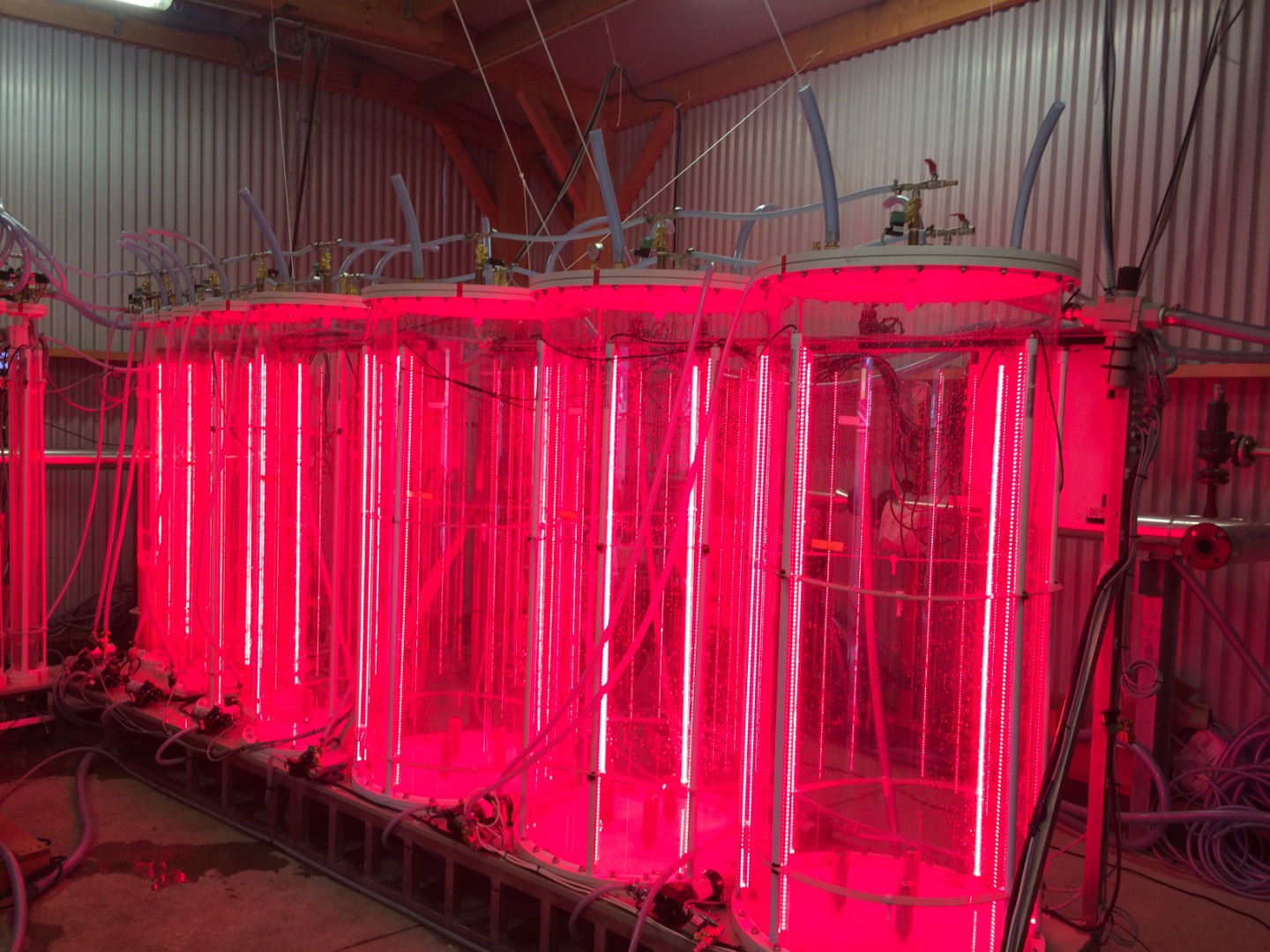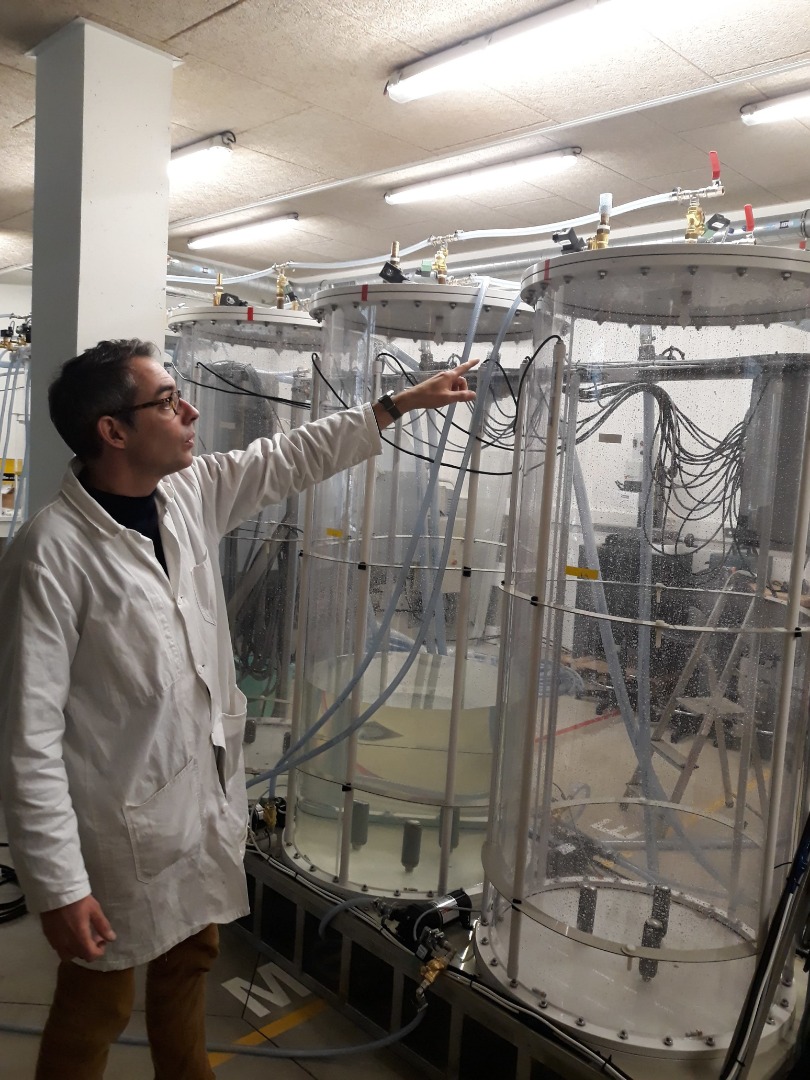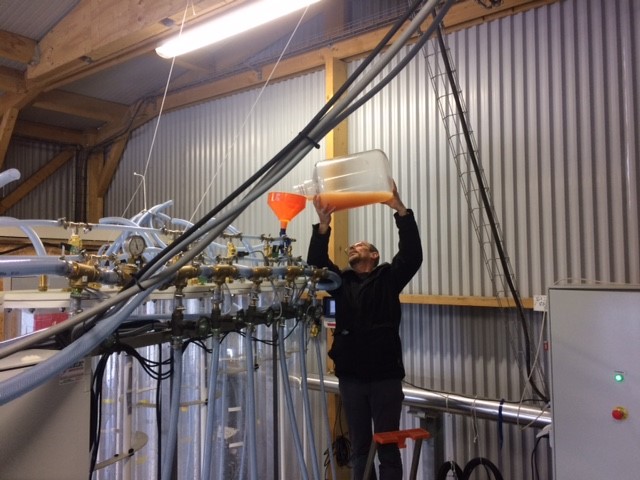Two of ALG-AD’s three pilot plants have now been commissioned and inoculated for the first time, with the first harvests from the pilots expected some time in April. During several months of hard work, the teams have designed, constructed and commissioned the pilot facilities at each location. These innovative systems combines large-scale algal cultivation facilities with anaerobic digestion.
The first of the project’s three large-scale pilot photobioreactors was inoculated in Langage AD in Plymouth, Devon on 12th March.
The pilot at Lamballe in Brittany followed a couple of weeks later on April 3rd.
The inoculations mark the start of large-scale experimenting and allow the project to move into the next stage of its investigations.
Both teams are happy with the way the initial inoculations have gone, as they are the first real tests of each system.
“Yes, we are happy, even if we know that this first experiment will not provide all the expected results,” said Luc Chauchat, charged with building the French reactor on behalf of project partner Le Centre National de la Recherche Scientifique (CNRS). “Our initial goal is to know if an axenic inoculum of our strain can grow in a non-axenic situation (NRD).
“In the coming weeks we will continue to work at the lab with our smaller bioreactor to refine the medium we use, in addition to the NRD. While we do this, we will of course be working on optimizing the automation of the bioreactor.”
For his Swansea University colleague, Dr Claudio Fuentes Grünewald, the whole process has been a major challenge, which has involved inoculation a five thousand litre photobioreactor, then operating it in a semi-continuous mode. Next will come the harvesting process, using membrane technology, before finally concentrating the harvested microalgae in order to use in the mixotrophic reactor to get the final biomass.
“It is a new two-step process,” said Dr Fuentes Grünewald. “First doing the “environmental service” which is the nitrogen and phosphorous uptake, in the phototrophic phase, and then providing the high quality biomass from the mixotrophic phase. “
The project’s principle investigator Dr Carole Llewellyn said: ““It’s great to have reached the point where we are inoculating the reactors. Now the real work begins with the remediation of the nutrients from the anaerobic digestate.”



